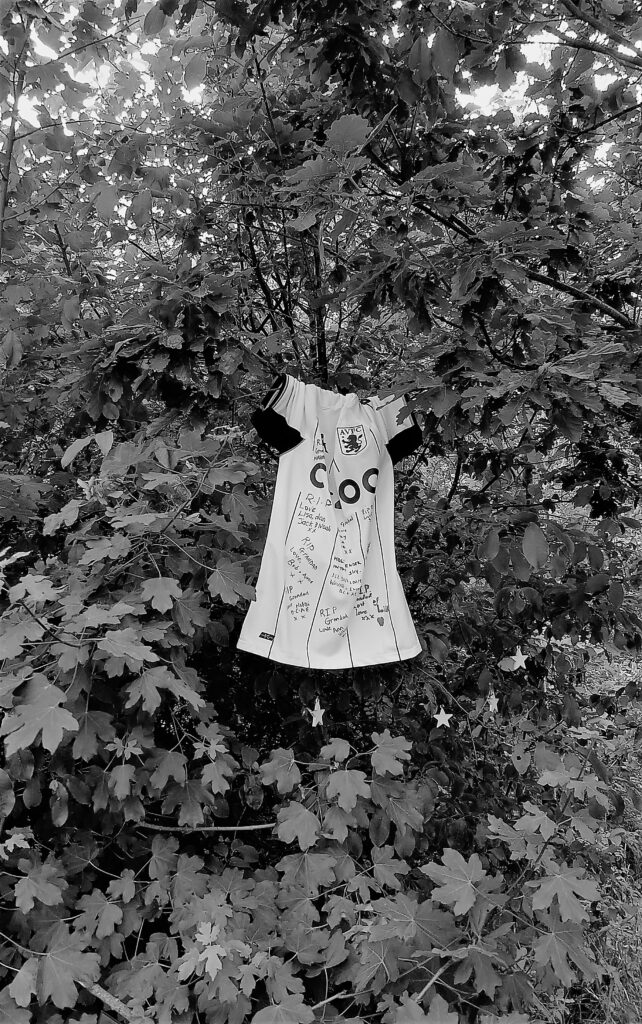
Sounding the Angel can now be accessed in full here. In a series of four blog posts, I introduce each of the four sections of the sound work. Today’s post discusses the final part of the work, ‘Summer’. You can listen to this section here. This section of the sound work invites the participants to reflect on the memorial site and the act of leaving memorial tributes there. It is more expansive in tone than previous sections, as the participants describe their changing responses.
Our first participant asks what constitutes litter. In one sense, he suggests, what is at the memorial in the trees can be seen as litter – it is material that has been left behind – but at the same time it is clearly meaningful and precious to those who have placed it there. He sees an irresolvable contradiction between his work as a volunteer litter picker and his scattering of his wife’s ashes at The Angel – although one that is mitigated to some degree by the rapid dispersal of the tribute in the wind. Nevertheless, a tension remains for him between a memorial act that he can now ‘understand’ but of which he does not fully ‘approve’, commenting: ‘That’s the difficult part. I see it from all sides now. But I still don’t have a nice, neat answer from either side.’
For our second participant, too, there was a troubling aspect to leaving memorial tributes in the trees, and she turns to the ecological debates that have arisen around the clootie tree sites as her reference point. For a time, she explains, she was ‘a bit grumpy’ about the plastics and other non-biodegradable materials that people were leaving at the site. However, she reflected that it was not her place to judge others’ acts of commemoration, saying: ‘It’s so personal and whatever that little thing is, a little card or a plastic angel, or whatever they want to have there, it’s theirs to hang or leave. I used to mind terribly but now I don’t mind at all’. For both participants, leaving their own memorial tributes brings greater understanding of, and empathy for, what it means to others to do so.
The sound piece closes with the participants evoking the memorial site in sensory terms. Speaking of the positive effect of The Angel on the perception of public art, our first participant described a memorial that had been put up in his village to commemorate the mining industry. Designed in the shape of a miner’s lamp and illuminated by solar panels, the memorial signified that out of darkness came light. The theme of light is echoed by our second participant’s description of those trees that have lights strung around them, to shine out through the dark. She also evokes the sounds of the memorial – the wind chimes, the rustling of the cellophane that wraps the flowers. Her final description is of what she hears when she sits in the grass at The Angel, a combination of the noise of the traffic and the sounds of nature: ‘if you zone out a little bit you can hear the trees and then you hear the cars and it almost becomes one noise. So, it doesn’t become the mechanical noise from the car and then the natural noise from the trees, it’s just sort of a white noise in the end.’
Our conversations with the participants were reflective about the ecological questions that are posed by the site, while understanding the emotional weight that it holds for those who leave memorial tributes there, Feelings about the memorial were fluid and fluctuating. Both participants were attentive to the sensory qualities of the site, and there was an association for them both with a light shining out of the darkness as a beacon of hope.
This section of the sound work integrates the recordings from our last field recording session at The Angel. You can hear the rustling of leaves and grasses, a bird calling from the treetops in the memorial site, and the airier tone of the vibrations moving through The Angel that was recorded by the geophone.
